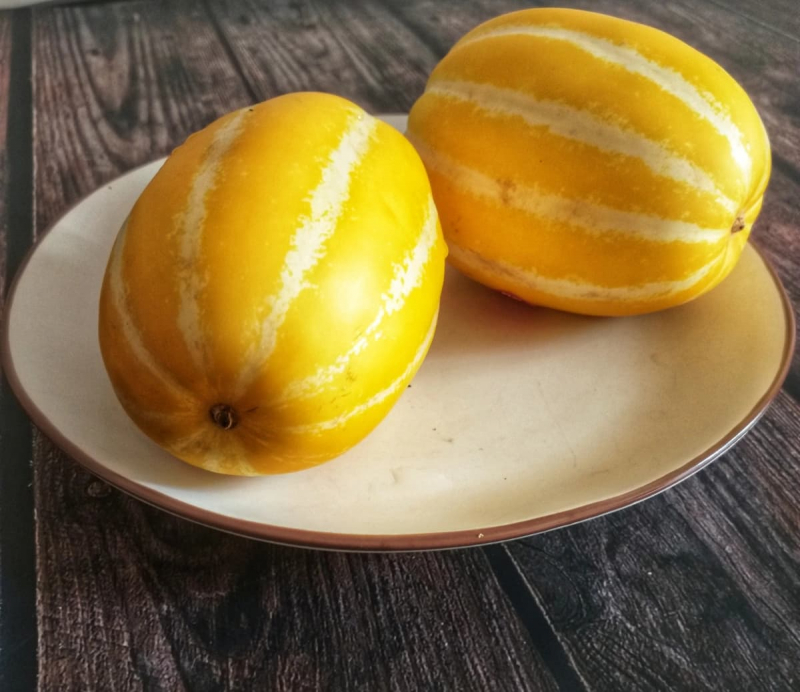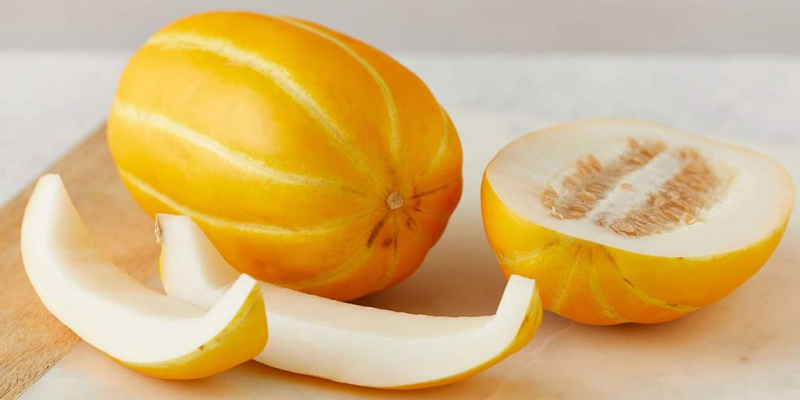Korean Melon

The Korean melon is a broad term for a number of different types of small, edible melons in the Cucurbitaceae family. It is called Chamoe in Korean, and “Cham” means “true”, “oe” means “melon”. Summer in Korea is symbolized by melons, which are typically served chilled as a meal to calm you down. Melons are preferred for their small, portable size, hydrating qualities when consumed, neutral flavor, and firm, crisp flesh.
Averaging 10 to 20 centimeters in length, Korean melons are small to medium-sized fruits with a consistent, oval to oblong shape and blunt, curled edges. The melon's bright yellow, the thin, smooth, waxy, matte peel has linear, uniformly spaced white sutures that run the whole length of the fruit. Korean melons have a mild aroma when they are mature, feel hefty for their size, and give slightly when pressure is applied. The peel, flesh, and seeds of the melon are all edible. The seeds and fibers are frequently regarded as the sweetest part of the melon, while the rind has a little bitter flavor. The flesh has a crisp, succulent texture and hints of banana, melon, cucumber, and honeydew. It is mildly sweet and flowery in flavor.









